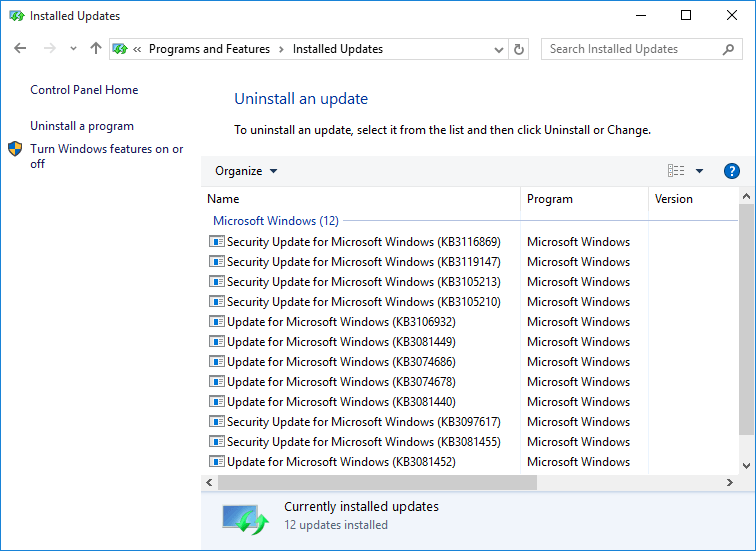On rare occasions, a Windows Update may have adverse effects on your system. In times like these, you may decide to remove the update in order to have the system run without it. To do this, follow these steps:
- Display the Control Panel.
- Click the Programs category.
- Under the Programs and Features heading, click View Installed Updates. Windows displays the Installed Update screen. (See Figure 1.)

Figure 1. Windows Update history screen.
- Select the update you want to remove by clicking on it once. The screen changes slightly, displaying an Uninstall link just to the right of the Organize drop-down list.
- Click the Uninstall link. Windows asks you if you really want to uninstall the update.
- Click Yes. The update is uninstalled.
When you're finished uninstalling updates, close the Control Panel window. You may also need to restart your system to finish an uninstall.
Author Bio
Barry Dysert
Barry has been a computer professional for over 35 years, working in different positions such as technical team leader, project manager, and software developer. He is currently a software engineer with an emphasis on developing custom applications under Microsoft Windows. When not working with Windows or writing Tips, Barry is an amateur writer. His first non-fiction book is titled "A Chronological Commentary of Revelation." Learn more about Barry...
Displaying Details about an Audio File
Audio files have additional attributes that other files don't have. This tip describes how you can display these ...
Discover More
Moving and Sizing Windows Using the Keyboard
Moving and sizing windows is a normal part of using the Windows operating system. There are times when you may want to do ...
Discover More
Repairing Your System Using a System Repair Disk
If your system gets into a state where it cannot be started normally, this tip presents you with options of how you can ...
Discover More
Disabling USB Storage Devices
USB storage devices can be extremely helpful. They can also allow people to copy and access your information through the ...
Discover More
Disabling Automatic Reboot after a Windows Update
It may not always be a good thing to have Windows automatically restart your computer after an update. This tip tells you ...
Discover More
Limiting Bandwidth for Updates
Use a new advanced feature in Settings to limit upload bandwidth usage. By setting the absolute bandwidth an update can ...
Discover More

![]()
![]()
![]() This tip (5647) applies to Windows 7, 8, and 10.
This tip (5647) applies to Windows 7, 8, and 10.
Comments